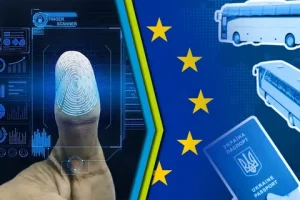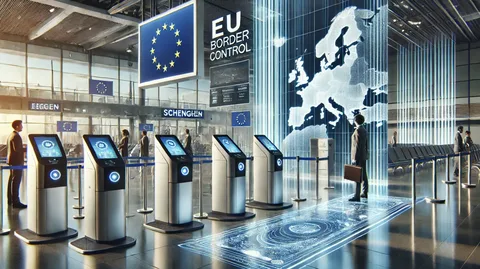EU’s New Biometric Border Checks: What Non-EU Travelers Need to Know
What are the implications for non-EU citizens of the EU’s new biometric border checks? Reuters, London, October 8 With the launch of its long-awaited new biometric entry-check system on Sunday, the way all non-EU citizens, including British tourists, travel to and from the bloc will begin to alter.
All non-EU nationals entering the Schengen area—all EU countries save Ireland and Cyprus, as well as Iceland, Norway, Switzerland, and Liechtenstein—will have to register their personal information, including fingerprints and facial photos, via the Entry/Exit System (EES).
WHY IS THE CHANGE BEING MADE BY THE EU?
Instead of manually stamping passports at the EU’s external border, the new computerised system will generate digital records that use biometrics to connect a travel document to an individual’s identity.
In addition to preventing illegal migration, fighting identity fraud, and identifying overstayers, the EU intends to improve the management of its external borders.

It will keep an eye on whether those entering the bloc without a visa are abiding by the regulation that they can stay for up to 90 days during any 180-day period.
WHAT IS GOING TO OCCUR? First-time visitors entering the Schengen area must register their fingerprints, scan their passports, and submit a facial scan.
Travellers’ information will be compared to the EES database upon departure to ensure adherence to current regulations regarding registration departure and stay duration.
Facial biometric verification will be the only requirement for subsequent trips. Children under the age of twelve will only have their photos taken; they must be registered under EES.
EES is not required to be paid for by travellers. WHERE DO THE CHECKS TAKE PLACE? upon arrival at Schengen region ports, train stations, international airports, and border crossings.
However, EES registration will be necessary upon departure from the UK at the Port of Dover, Eurotunnel terminal in Folkestone, and Eurostar terminal at London St Pancras, under the supervision of French border officials.
Once at their destination, travellers won’t have to complete the check again until they depart. WILL THE BORDER BE DELAYED DUE TO EES’S INTRODUCTION? The EU is certain that there won’t be any major interruption because EES is being implemented gradually.
Checks may be temporarily suspended by border agents if processing times grow unreasonably lengthy. Starting on October 12, only freight and coach traffic will be subject to EES checks at the Port of Dover and the Eurotunnel terminal in Folkestone.
Checks on passenger vehicles will take place at Dover in November and at Eurotunnel at the end of the year. The new border procedures will be implemented gradually, according to Eurostar.
However, as the new EU systems take hold, the British government has recommended travellers to give themselves extra time for their trips, and the Road Haulage Association of Britain has warned that there would be longer queues at peak hours.
Holiday traffic during Easter 2026 and the summer after EES’s implementation, when many families travel for the first time, will be the major test.
There will be further changes in 2026. EES serves as a forerunner to the European Travel Information and Authorisation System (ETIAS), which is scheduled to go live in late 2026.

Before they can travel, people of non-Schengen areas must apply for an ETIAS authorisation, submit personal information and itinerary details, and pay a 20 euro cost.
The permission will remain in effect for three years, or until the expiration of a passport, whichever occurs first.
European tourists to Britain have been required to obtain an electronic pass before their journey since April.
SOURCE: Reuters News











